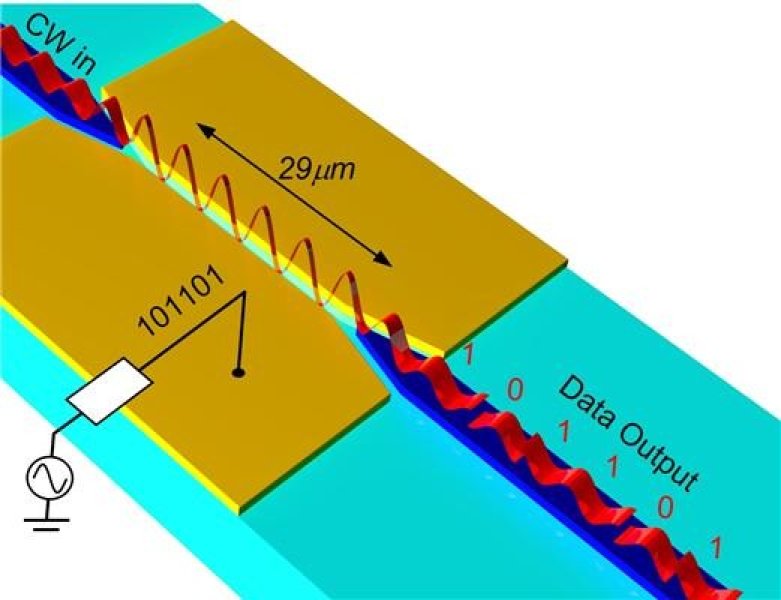Although a pure FM signal is highly desired in applications such as spectroscopy, sensing, and communication, it is theoretically very difficult to realize. Very few works claimed to have achieved pure FM signal. The existing methods to generate pure frequency modulation includes
1. Multiple electrodes in DFB structure
2. Injection locking scheme
3. Quantum stark effect .
In order to tune the semiconductor laser, the alternative knob that we choose is the nonresonant optical modulation, in which a laser with shorter wavelength is used to optically inject free carriers into the DFB laser under modulation. Because it does not rely on the electrical circuitry, and for the high-speed modulation and short pulse generation, it is not limited by electrical parasitic effects and can reach the fast response only limited by the carrier relaxation time and the photon lifetime.
Most important is that optical modulation can vary the pre-existing carrier distribution within laser cavity, which is established by the electrical injected current together with cavity mode . This property is extremely useful to create pure frequency modulation (FM) or amplitude modulation (AM) in a single longitudinal mode semiconductor laser.
If external modulator is applied, pure FM signal can also be generated via Lithium Niobate phase modulator . However, the FM created in such configuration depends greatly on the modulation frequency. The frequency deviation decreases with modulation frequency, and becomes zero when no modulation presents.
Pure AM signal can also be produced with a zero chirp Mach-Zehnder modulator. However, this kind of device is highly polarization dependent, which increases the attenuation and cost of system.



